25+ SAMPLE Construction Cleaning Checklist
-
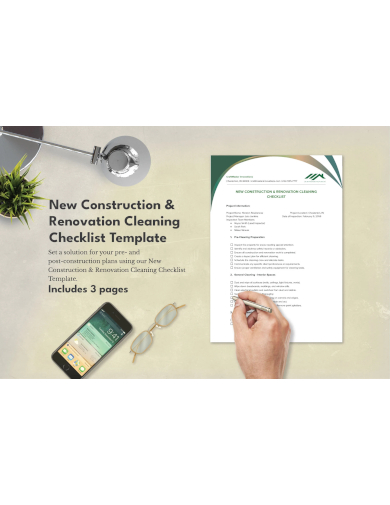
New Construction Renovation Cleaning Checklist Template
download now -

Construction Site Cleanliness Checklist Template
download now -

House Cleaning Checklist Template
download now -
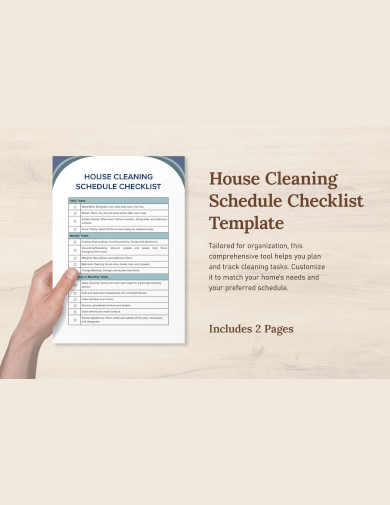
House Cleaning Schedule Checklist Template
download now -
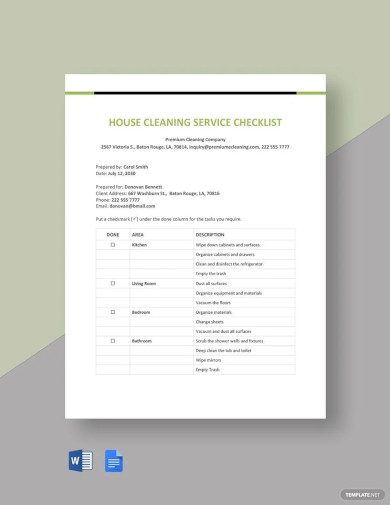
House Cleaning Service Checklist Template
download now -
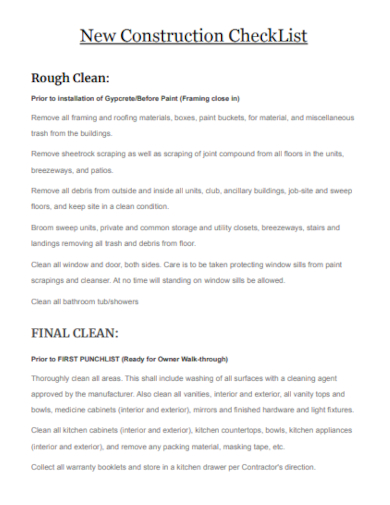
New Construction Cleaning Checklist
download now -
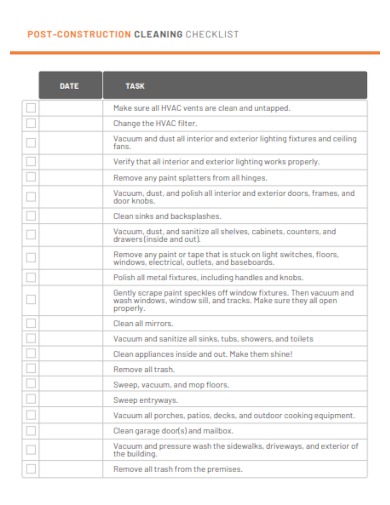
Post-Construction Cleaning Checklist
download now -
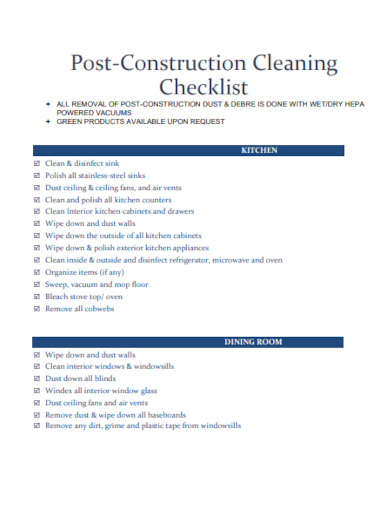
Post-Construction Kitchen Cleaning Checklist
download now -
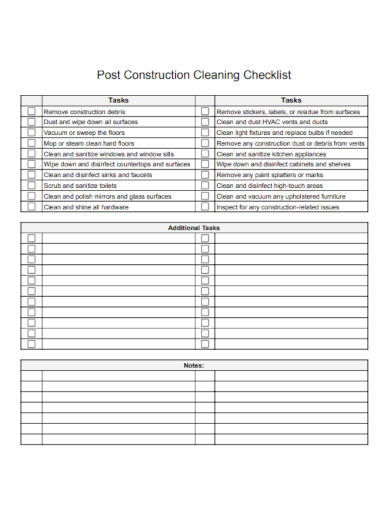
Printable Construction Cleaning Checklist
download now -

Construction Site Cleaning Checklist
download now -
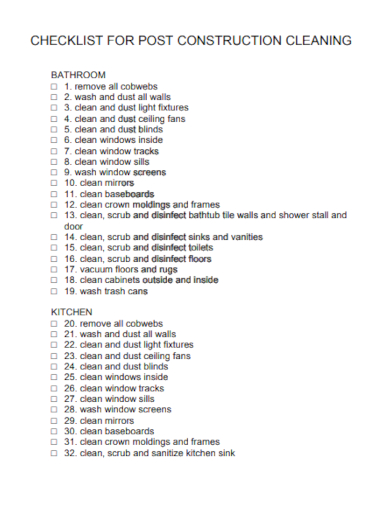
Checklist for Construction Cleaning
download now -
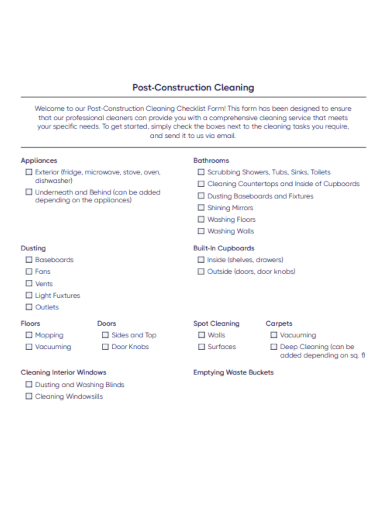
Construction Cleaning Checklist in PDF
download now -
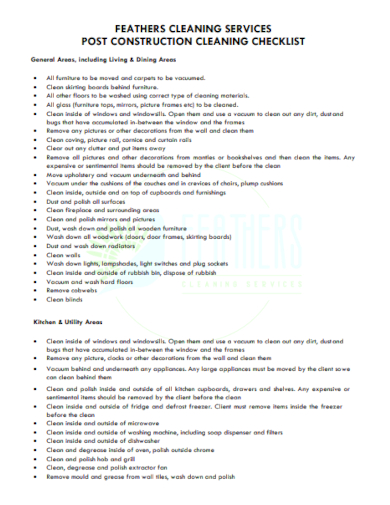
Construction Cleaning Services Checklist
download now -
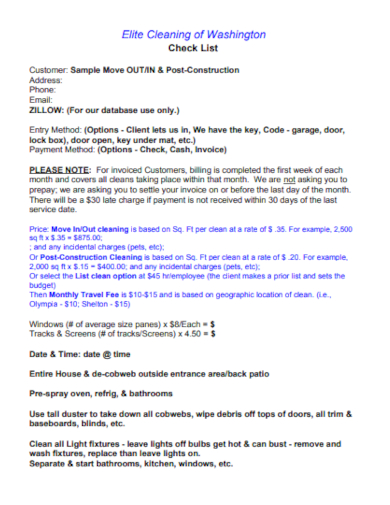
Construction Move-In Cleaning Checklist
download now -
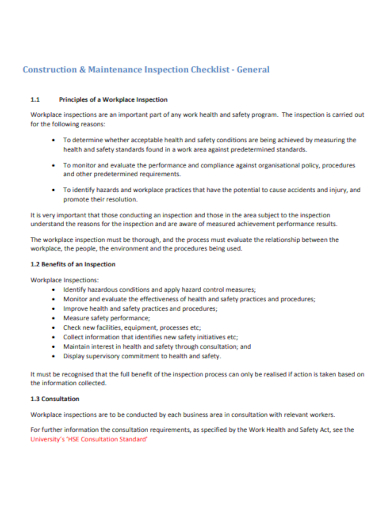
General Construction Cleaning Checklist
download now -
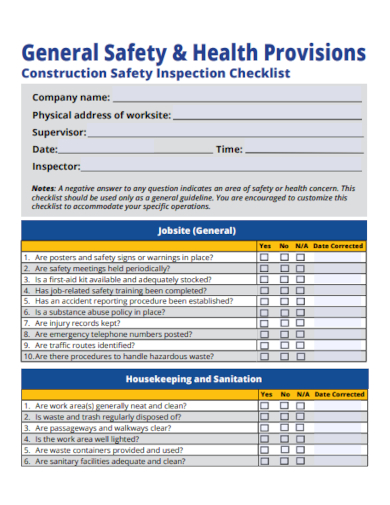
Construction Safety Cleaning Checklist
download now -
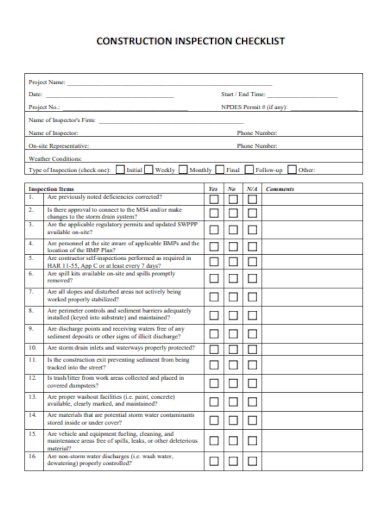
Construction Cleaning Inspection Checklist
download now -
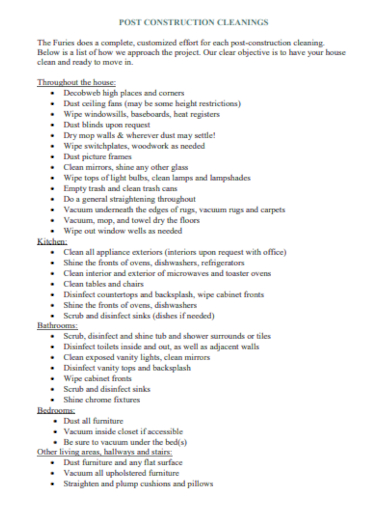
Sample Construction Cleaning Checklist
download now -
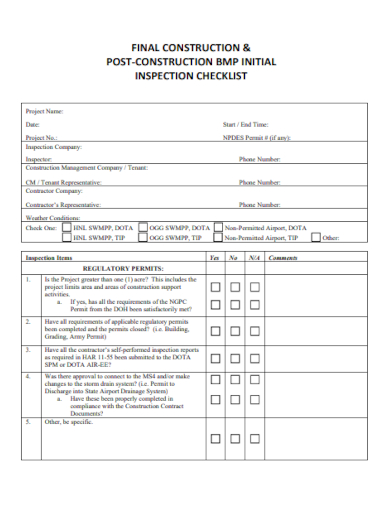
Construction Initial Cleaning Checklist
download now -
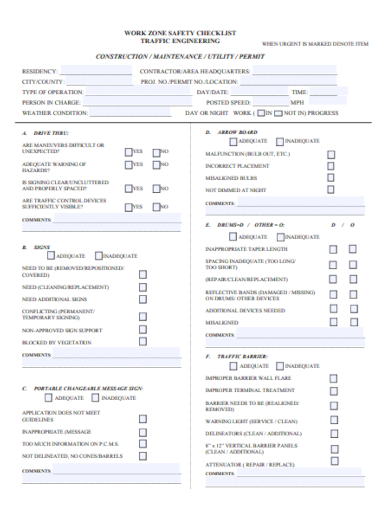
Construction Cleaning Permit Checklist
download now -

Construction Renovation Cleaning Checklist
download now -
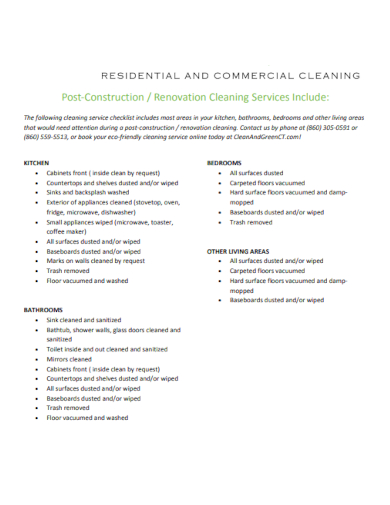
Commercial Construction Cleaning Checklist
download now -
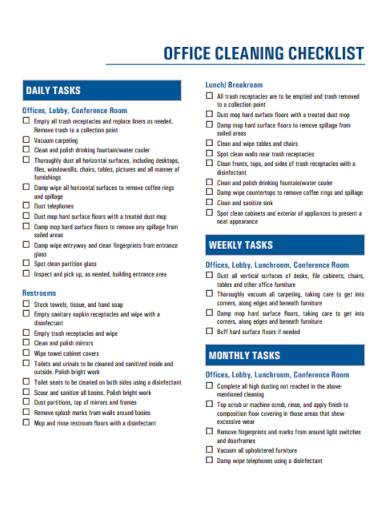
Office Construction Cleaning Checklist
download now -
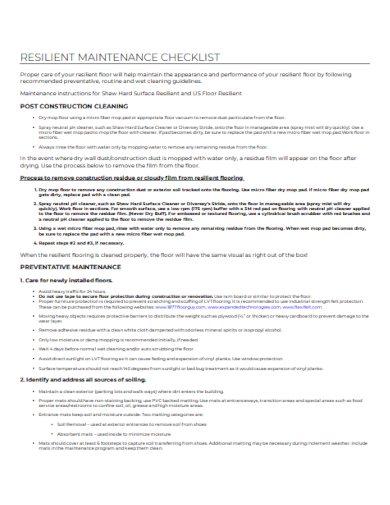
Construction Maintenance Cleaning Checklist
download now -

Construction Industry Cleaning Checklist
download now -
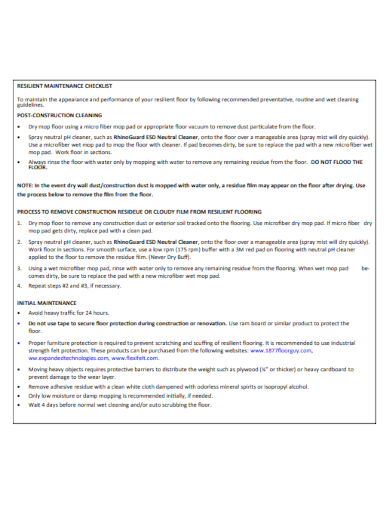
Floor Construction Cleaning Checklist
download now
FREE Construction Cleaning Checklist s to Download
25+ SAMPLE Construction Cleaning Checklist
Definition:
Importance of a Cleaning Checklist:
Phases of Post-Construction Cleaning:
Key Elements in the Checklist:
Safety Measures during Cleaning:
Customizing Your Checklist:
Utilizing Professionals:
How often should a construction cleaning checklist be implemented during a project?
What role does the checklist play in ensuring compliance with environmental regulations?
Why is it crucial to document the completion of cleaning tasks in the checklist?
Can a construction cleaning checklist be used for both interior and exterior cleaning?
What measures are included in the checklist to prevent the spread of dust or contaminants?
Definition:
A Construction Cleaning Checklist is a structured guide detailing the cleaning tasks to be executed post-construction. It ensures the site is free from debris, dust, and potential hazards, transforming it into a clean, safe, and move-in-ready space. This checklist emphasizes thoroughness and safety, streamlining the transition from construction chaos to polished completion.
Importance of a Cleaning Checklist:
After the rigorous process of construction, a final cleanup is not just about aesthetics. A meticulous cleaning process ensures safety, boosts the property’s value, and signifies the culmination of a project. The role of a Construction Cleaning Checklist can’t be overstated.
- Safety and Compliance: Ensures that all safety hazards, debris, and construction-related materials are removed, reducing the risk of accidents and ensuring compliance with safety regulations.
- Client Satisfaction: Presents a clean and visually appealing site to clients, enhancing their perception of the project’s quality and professionalism.
- Health and Hygiene: Removes dust, debris, and allergens that can negatively affect the health of occupants or workers.
- Preventing Damage: Ensures that surfaces, fixtures, and finishes are protected from damage during the cleaning process.
- Smooth Handover: Facilitates a seamless handover from construction to the next phase or occupancy.
- Efficiency: Helps cleaning crews work systematically, reducing time and effort.
- Accountability: Provides a documented record of completed cleaning tasks, aiding in accountability and quality control.
- Quality Assurance: Supports the project’s quality control processes, ensuring that workmanship is up to standard.
- Professionalism: Reflects positively on the construction company’s professionalism and attention to detail.
Phases of Post-Construction Cleaning:
Initial Cleanup:
The first step after the construction work concludes is the initial cleanup. It’s primarily about making the area more accessible by getting rid of the bigger, more apparent messes:
- Debris Removal: This is the stage to dispose of larger pieces of waste such as discarded bricks, broken tiles, leftover materials, and tools.
- Sweeping: Once the larger debris is cleared, it’s time to sweep the floors to remove dust and smaller particles.
- Surface Dusting: Horizontal surfaces like window sills, door frames, and countertops often collect a thick layer of dust during construction. A preliminary dusting helps make the deeper cleaning more effective.
Deep Cleaning:
After the initial cleanup, it’s time for a more intensive cleaning process. The focus here is to ensure that the space not only looks clean but is free from any harmful residues:
- Floor Scrubbing: Especially for tiled or wooden floors, scrubbing ensures removal of stubborn stains or adhesive residues.
- Wall Cleaning: Paint drips, dust, and smudges are common on walls. These need to be cleaned meticulously.
- Fixture and Fitting Cleaning: Light fixtures, fittings, and electrical outlets collect dust and need to be cleaned to ensure they function properly and look their best.
- Window Cleaning: This includes scraping off paint splatters, removing stickers, and ensuring both the inside and outside of the windows are sparkling clean.
Sanitization:
Post the deep cleaning, sanitizing the area ensures a healthy environment:
- Bathroom & Kitchen Sanitization: These areas, in particular, need attention to ensure they are germ-free. This includes cleaning and sanitizing toilets, sinks, and kitchen countertops.
- Ventilation Systems: Dust and construction particles often find their way into ventilation systems. These need to be cleaned and sanitized to ensure healthy air circulation.
Final Touch-up:
The last step is all about perfection:
- Polishing: Floors, especially if they are wooden or marble, benefit from a final polish. This gives them a pristine finish.
- Re-inspection: Walk through the site once more, looking for any spots or areas that might have been missed or need a bit more attention.
- Setting Up: If the space is going to be furnished immediately, this is the stage to set up furniture, fixtures, or any equipment.
Key Elements in the Checklist:
Safety Gear and Equipment:
Before embarking on the cleaning journey, ensuring safety is paramount. Depending on the condition and type of the construction site, safety equipment such as gloves, safety goggles, hard hats, and dust masks might be necessary.
Cleaning Supplies and Tools:
Equipping oneself with the right cleaning agents and tools is essential. This might include brooms, mops, cleaning cloths, sponges, scrub brushes, buckets, and appropriate cleaning agents tailored to different surfaces and types of dirt or stains.
Area-Specific Cleaning Tasks:
Different areas of a construction site require different cleaning approaches:
- Interior Rooms: Dusting, vacuuming, scrubbing floors, and cleaning windows are the typical tasks.
- Bathrooms: Focus on tiles, fixtures, mirrors, and ensure thorough sanitization.
- Kitchens: Countertops, sinks, cabinets, and appliances all need special attention.
Hazardous Waste Disposal:
Construction sites might have hazardous waste like paint, solvents, or chemicals. Properly disposing of or recycling such materials is critical to ensure environmental safety and compliance with local regulations.
Detailed Attention to Fragile Surfaces:
Certain surfaces, such as glass or polished wood, might need special care to prevent damage. Using the right cleaning agents and tools is crucial to maintain the integrity of these surfaces.
External Cleaning:
Outside spaces can’t be ignored. This might involve tasks like clearing construction debris, cleaning patios or decks, pressure washing walls or driveways, and landscaping touches.
Final Walkthrough and Inspection:
Once all tasks are completed, a final inspection ensures that no spots are missed and that the quality of cleaning meets the desired standards. This step guarantees client satisfaction and ensures the space is ready for occupancy or further decoration.
Safety Measures during Cleaning:
Use of Personal Protective Equipment (PPE):
Wearing appropriate PPE, such as gloves, dust masks, safety goggles, and hard hats, can protect cleaners from potential hazards like dust, chemicals, and sharp objects left behind.
Handling Cleaning Agents Safely:
Always read and follow the manufacturer’s instructions when using cleaning agents. This ensures their safe and effective use. It’s also essential to store chemicals safely, away from children and pets.
Awareness of Surroundings:
Being aware of one’s surroundings can prevent accidents. This includes watching out for wet floors, sharp objects, electrical cords, and other potential hazards.
Proper Ventilation:
When cleaning, especially with chemical agents, ensure the room or area is well-ventilated to prevent the buildup of harmful fumes.
Lifting Techniques:
When moving heavy items or debris, use proper lifting techniques to prevent back injuries. Bend at the knees and keep the back straight when lifting.
Avoiding Slips and Falls:
Ensure that wet floors are marked clearly, and spills are cleaned up immediately. Wearing non-slip shoes can also help prevent accidents.
Electrical Safety:
Always check the area for exposed wires or open electrical sources. Avoid using electrical equipment in wet areas, and never plug in a device with wet hands.
Emergency Preparedness:
Always have a first aid kit on hand, and be familiar with basic first aid procedures. In the event of a chemical spill or exposure, know the emergency procedures and have the necessary emergency contact numbers readily available.
Disposal of Waste:
Dispose of waste, especially hazardous materials, in accordance with local regulations. This ensures safety for the environment and reduces the risk of accidents from improperly discarded items.
Customizing Your Checklist:
Every construction project is unique, and so should your checklist. While there’s a generic structure to follow, always adapt and customize based on the specific needs and intricacies of your project.
Consult with Stakeholders:
Involve everyone from project managers, site supervisors, to the cleaning team when customizing your checklist. Their insights, drawn from different vantage points, can prove invaluable.
Prioritize Tasks:
While all tasks are essential, some might be more urgent or critical than others. For instance, cleaning up a spill to prevent accidents might take precedence over dusting. Order your checklist in a way that makes logistical sense.
Incorporate Feedback:
After using the checklist on a project, gather feedback from the team. Were there any tasks that were missed? Were there steps that felt redundant? Interactively refine the checklist based on this feedback for better efficiency in future projects.
Add Flexibility for Unforeseen Circumstances:
Construction sites can be unpredictable. While a checklist provides a guide, it’s also crucial to include provisions for unexpected situations, ensuring the team is prepared to handle unforeseen challenges.
Incorporate Visual Aids:
Sometimes, a picture can explain things better than words. Consider adding diagrams, icons, or photographs that provide clarity, especially for complex or technical tasks.
Digital Integration:
Consider digitizing your checklist for easy sharing and real-time updates. Mobile apps and software can also provide reminders and allow multiple users to collaborate and check off tasks as they’re completed.
Include Space for Notes:
At the end or beside each task, provide a space for notes. This allows workers to jot down any observations or issues that may need to be addressed later.
Set Clear Standards:
When detailing tasks, be as clear and specific as possible. Instead of just mentioning clean the floor, specify sweep and mop the floor, ensuring no residue is left behind. Clear directives ensure that tasks are completed to the desired standard.
Utilizing Professionals:
Consider hiring professional post-construction cleaning services. Their expertise ensures a thorough job, adhering to safety standards, and saves time.
Advanced Tools and Equipment:
Professionals come equipped with advanced cleaning tools and solutions tailored for construction sites. Whether it’s heavy-duty vacuum cleaners, industrial-grade scrubbers, or specialized cleaning agents, these tools can drastically reduce the time needed for cleaning while ensuring high-quality results.
Safety First:
Professional cleaning crews are trained to operate in a construction environment safely. They are aware of potential hazards like exposed nails, slippery surfaces, or harmful residues. Moreover, they come equipped with personal protective equipment (PPE) tailored for the tasks at hand, ensuring their safety and reducing liabilities.
Comprehensive Services:
Many professional cleaning services offer comprehensive packages that cover all aspects of post-construction cleaning. This can include interior and exterior cleaning, window washing, power washing, carpet cleaning, and more. Such all-inclusive services can be both cost-effective and convenient.
Customizable Solutions:
Recognizing that no two construction projects are the same, many professional cleaning services offer customizable solutions. They can tailor their services based on the scale, nature, and specific needs of your project.
Knowledge of Regulations and Standards:
Professionals are often updated on local regulations and standards related to construction cleaning. Whether it’s the disposal of waste, handling of hazardous materials, or ensuring environmental standards are met, their knowledge can be invaluable.
How often should a construction cleaning checklist be implemented during a project?
A construction cleaning checklist should be implemented regularly throughout a project, ideally after each major phase. This ensures safety, maintains a productive work environment, and simplifies post-construction cleanup, making the transition to the project’s next phase smoother.
What role does the checklist play in ensuring compliance with environmental regulations?
The checklist ensures compliance with environmental regulations by outlining specific cleaning tasks that prevent pollution, manage waste, and minimize ecological impact. It serves as a systematic guide to adhere to standards, avoiding violations and potential legal repercussions.
Why is it crucial to document the completion of cleaning tasks in the checklist?
Documenting the completion of cleaning tasks ensures accountability, verifies adherence to safety and quality standards, and provides a clear record for audits or inspections. It enhances efficiency, builds trust with stakeholders, and minimizes risks associated with overlooked or incomplete tasks.
Can a construction cleaning checklist be used for both interior and exterior cleaning?
Yes, a construction cleaning checklist can cover both interior and exterior cleaning. It ensures thoroughness, standardizes procedures for both areas, and guarantees that no crucial cleaning tasks, whether inside or outside the structure, are overlooked during the cleanup process.
What measures are included in the checklist to prevent the spread of dust or contaminants?
The checklist includes measures like wet-wiping surfaces, using HEPA-filtered vacuums, sectioning off work areas with barriers, frequent disposal of debris, and employing air scrubbers. These steps mitigate dust dispersion and prevent contaminants from affecting adjacent areas or the environment.
In conclusion, a meticulous construction cleaning checklist is indispensable for transforming a construction site into a habitable space. Leveraging this checklist guarantees safety, boosts property appeal, and underlines professionalism. For a deep dive into effective construction practices and top-notch maintenance strategies, explore our expansive article repository. Your blueprint for post-construction excellence awaits.
